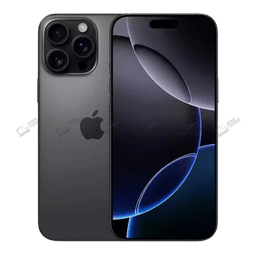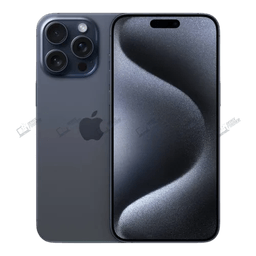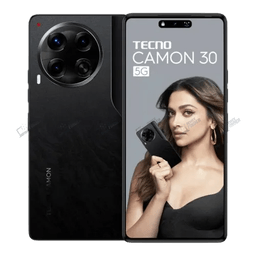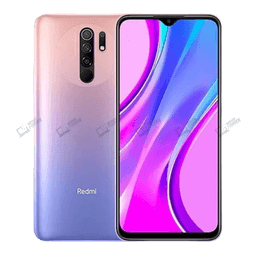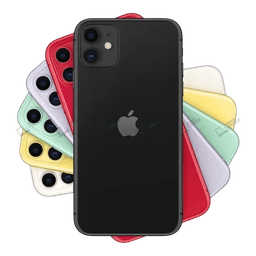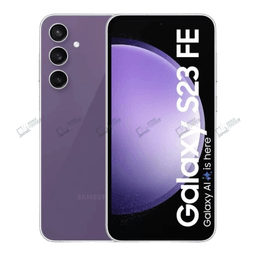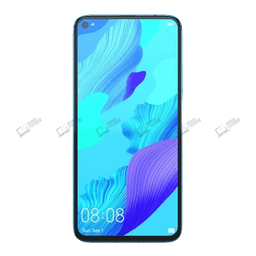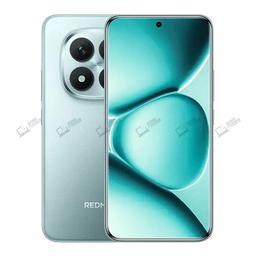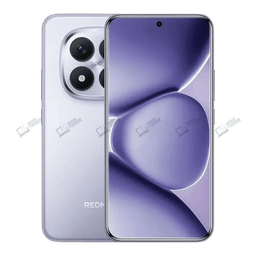
Evolution of Mobile Phone in Bangladesh: Trends, Technologies, and Buying Insight
Quick Summary: By 2025, mobile phones in Bangladesh have evolved into essential tools for education, work, finance, and healthcare. With AI features, smartphones offer real-time translation, smart photography, and voice commands. They empower youth, support remote work, and transform rural access to services—making phones vital lifelines in a rapidly digitalizing society.
Mobile Phones – Beyond Just Communication
By 2025, the mobile phone had evolved beyond its original function of communication via voice. In Bangladesh, where digitalization is rapidly accelerating, mobile phones are now an essential part of daily life. Mobile phones and smartphones are now portable hubs that provide productivity, entertainment, educational services, financial services, healthcare, etc.
Smartphones in Bangladesh empower a whole new digital generation. From remote working tools such as Zoom and Google Workspace to online banking services like bKash and Nagad, they are a powerful tool for a young Bangladeshi population. Not only are they for communicating, but also for learning and working. Students can access online learning via their phones, such as 10 Minute School. Social media apps and inventory management tools allow entrepreneurs to run their entire business from mobile devices.
With AI-integrated smartphones, which are becoming increasingly common, users can now take advantage of features such as real-time translations, intelligent photography and voice-controlled automata. The transformation of rural areas is particularly important, as traditional infrastructure is limited and mobile connectivity increases access to services.
Mobile phones are more than just communication devices in Bangladesh. They are lifelines. The phones are a reflection of a society that is smarter and more connected, where the phone can be your classroom, your bank, your entertainment center, all in one device.
How Have Mobile Phones Evolved in Bangladesh?
Mobile phones have evolved in Bangladesh to become a powerful story of technological innovation, social-economic change, and digital integration. The evolution of mobile phones in Bangladesh is a compelling story of technological adaptation, socio-economic transformation, and digital inclusion.
Initially, mobiles were a luxury item, used primarily by upper-class people for SMS and calling. The mobile network was not very widespread, SIM cards cost a lot, and feature phones were heavy but durable. The entry of local telecom companies like Grameenphone, Banglalink and Robi, combined with their competitive pricing prompted massive adoption, even in rural areas.
In the early 2010s, affordable Android phones from brands such as Tecno and Infinix were introduced, followed by Xiaomi and Realme. Brands that made touchscreen phones affordable to families with middle incomes led to a rapid growth of mobile internet use. According to BTRC, by 2025, more than 95% of Bangladeshis will access the Internet via smartphones.
Local demand has also influenced brands from around the world to launch country-specific versions of their products that are optimized for local networks, battery life, and affordable pricing. In addition, the surge in smartphone adoption has also supported mobile-first platforms such as digital banking, online education, telehealth and ecommerce, through Daraz and Pathao.
Smartphones are now an essential part of daily life for Bangladeshis. This evolution is a reflection of not only technological advances, but also Bangladesh's increasing digital literacy, its infrastructure and desire for innovation.
What Types of Mobile Phones Are Available in 2025?
In 2025, the mobile phone market in Bangladesh will become more diversified than ever before, catering to every user—from budget-conscious rural buyers to urban tech enthusiasts. Broadly, mobile phones in 2025 fall into three major categories - button phones, smartphones, and foldable or hybrid devices.
1. Smartphones:
Smartphones are still the most popular devices. Android smartphones under BDT 15,000 from Xiaomi, Realme, Tecno and Infinix feature large screens, multiple camera setups and batteries that last a long time. Mid-range phones offer better AI cameras and chipsets such as MediaTek Dimensity, Snapdragon 7 series, or MediaTek Dimensity. Flagship phones like the Samsung Galaxy S25 Ultra and iPhone 15 Pro Max push boundaries in terms of 5G technology, professional-grade cameras and satellite communications.
2. Foldable & Hybrid Devices:
In 2025, foldable phones will be more accessible in Bangladesh. Models like the Samsung Galaxy Z Fold 5, Huawei Mate Xs 2, and Tecno Phantom V Flip are changing how users experience multitasking and content consumption. Though still a premium, the gap in pricing is narrowing.
3. Button Phones (Feature Phones):
Button phones are still popular in Bangladesh despite the boom in smartphones, particularly among older users, those living in rural areas, and people who want a backup device. The Nokia 1280 and Symphony L46 are still the most popular button phones for entry level sales. The devices are ideal for those who live in places with low or unstable electricity, lack digital literacy, or have a long-lasting battery. They also offer basic SMS, FM radio and calling capabilities.
Bangladeshi mobile phone market in 2025 will offer a wide range of phones, from the most popular basic button phones, to AI-integrated smartphones and foldables. There is a device for everyone's budget and lifestyle. This diversity is a reflection of a digitally-savvy populace with diverse needs and ambitions.
Popular Phone Brands in Bangladesh (2025)
In 2025, the mobile phone market in Bangladesh will be more dynamic than ever. With users demanding cutting-edge technology, strong performance, and long-term value, top brands are fiercely competing to win the attention of tech-savvy Bangladeshi consumers. Updated market trends show that both global giants and mid-range disruptors are reshaping mobile usage habits across the country.
Xiaomi: Market Leader in Budget & Midrange
Xiaomi dominates the market with a 18.56% share (April 2025), thanks to its aggressive pricing, strong after-sales service, and high-value offerings. The Redmi and POCO series continue to be the go-to choices for those seeking flagship features at affordable prices. Local assembly plants have also made Xiaomi devices more accessible across both urban and rural areas.
Samsung: Reliable and Feature-Rich
Samsung is close behind with 17.45% of the market and continues to be a favorite among consumers who are looking for high-performance and excellent design. Galaxy A, S and M Series caters to three different market segments: premium, mid-range and budget. Samsung AMOLED screens, Exynos and Snapdragon processors are powerful enough to satisfy users at all price levels.
Vivo: Camera-Centric Mid-Range Player
Vivo holds a 11.88% market share and continues to appeal to the youth segment with its stylish Y and V series. Known for camera innovation, particularly in portrait and night photography, Vivo smartphones are a favorite among mobile vloggers and selfie enthusiasts. In Bangladesh, Vivo's brand presence is supported by extensive retail availability and frequent promotional offers.
Realme: Fast-Growing Youth Brand
Realme's smartphones, which emphasize style, performance and battery efficiency, captured 10.38% of the market. Narzo, GT and other series of smartphones are popular with gamers and heavy-users. Realme's flash sales strategy and exclusive online offers have worked in Bangladesh, a market that is increasingly focused on digital.
Oppo: Elegant Design Meets Utility
With a 9.4% share, Oppo continues to grow its footprint through its focus on aesthetic design and camera optimization. The Reno and A series deliver a sleek experience, often with innovations in low-light photography and portrait enhancements. Oppo’s retail presence in Bangladesh is extensive, including strong brand visibility in shopping malls and outlets.
Apple iPhone: The Premium Experience
The iPhone's popularity is increasing among the premium market in Bangladesh, despite its low share of the Bangladeshi iPhone market. Professionals, content creators, and entrepreneurs are especially interested in the iPhone 14 and 15. Apple's iOS, its unmatched security and constant software updates, make it a desirable choice for people who are looking to invest in quality. Accessibility has been improved through EMI and retailers like iStore, Gadget & Gear And Apple Gadgets.
OnePlus: Performance Meets Prestige
OnePlus has gained popularity among Bangladeshi tech-savvy who value speed, a clean UI called OxygenOS and high-end specs. The OnePlus 12 & Nord 3 are equipped with powerful Qualcomm processors, fast charging and other features that appeal to multi-taskers and gamers. OnePlus smartphones are becoming more widely available, both in online and offline markets. This is especially true in Dhaka and Chittagong.
Tecno: Budget Innovation
Tecno has become a strong player in the entry- to mid-level segment. The Camon and Spark series deliver high-resolution cameras, large batteries, and smooth displays at competitive prices. With local marketing campaigns and frequent online deals, Tecno continues to be a favorite among first-time smartphone users in districts outside major cities.
Infinix: Gaming & Entertainment for Budget Buyers
Infinix is a great choice for users who are price conscious and want immersive gaming, multimedia content, or both. Infinix Zero 30 & Note 30 Pro feature high-refresh rate displays, large batteries and processors optimized for gaming. Infinix phones are popular with students in Bangladesh and among young people who need a high-performance phone that won't break the bank.
The Bangladeshi mobile industry in 2025 will be shaped by innovation and diversity, from Xiaomi's dominance in the budget market to Apple's appeal for premium products. To win the hearts and minds of increasingly educated consumers, brands are focused on AI-integrated phones, improved mobile battery technology, as well as improvements in mobile displays.
Mobile Display Technology in 2025: What Bangladeshi Users Need to Know
By 2025 mobile displays technology will have reached a new level of innovation. There is a greater desire than ever for better battery life, sharper images, faster scrolling and improved sunlight visibility. Bangladeshi users of smartphones, from low-cost buyers to power-users with high-end devices, can now enjoy flagship features on their mid-range phones.
AMOLED & OLED Take the Lead
By 2025, AMOLED displays and other OLED panels will dominate the majority of mid-range to high-end devices. The screens have deeper blacks and vibrant colors with superior contrast. Samsung, Xiaomi, Vivo and OnePlus use advanced E6-OLED panels for their flagships, delivering HDR10+, increased brightness up to 3000 nits, and improved eye protection due to low blue light emissions.
High Refresh Rate Becomes Standard
Displays with 120Hz or 144Hz refresh rates, once reserved for gaming phones only, are now found in most smartphones priced under BDT 30,000. The high refresh rate ensures smoother gaming and animations. Infinix, Tecno and Realme budget phones have 90Hz displays, which makes the overall experience for users more immersive.
LTPO & Adaptive Refresh Technology
The iPhone 15 Pro, OnePlus 12, and other flagships feature LTPO displays (Low Temperature Polycrystalline Oxide), which allows dynamic refresh rates scaling between 1Hz and 120Hz. The battery life is dramatically improved, particularly in Always-On Display mode (AOD), a feature that's highly sought after by professionals and business people in Bangladesh.
AI-Enhanced Visual Calibration
Display technology has become smarter with AI integrated smartphones. Huawei and Samsung, for example, use AI to adjust brightness, color, tone, and other visual properties based on the lighting, type of content, and comfort level. This is especially important for gamers and binge-watchers who are on their phone all day.
Foldable and Rollable Displays
Foldable smartphones are no longer futuristic. Models like the Huawei Mate Xs 2, Samsung Galaxy Z Fold5, and Tecno Phantom V Fold are already available in the local market through importers and premium resellers. These phones feature UTG (Ultra-Thin Glass) and polymer-based flexible AMOLED panels, enabling multitasking and tablet-level productivity in a portable form factor.
Bezelless & Under-Display Advancements
The push for all-screen phones continues. Under-display cameras (UDC) and minimal bezels are now seen in upper mid-range and flagship devices. Xiaomi and ZTE lead this charge, while Samsung and Apple focus on Dynamic Island-style cutouts and punch-hole designs.
In 2025, mobile display technology will be about more than just looks. It'll also include efficiency, intelligent interaction, eye comfort and versatility. Bangladeshi consumers now have the ability to access display technology that used to be only available on luxury products. There's an affordable phone display for every lifestyle, whether you are a content creator or just a casual user.
Mobile Battery Technology in 2025: Powering the Next-Gen Smartphones in Bangladesh
In Bangladesh, the smartphone battery industry will have made a significant leap by 2025. Even mid-range smartphones support charging at 45W to 65W. Premium devices can charge at up to 100W, and are fully charged in less than 20 minutes. The AI-driven battery management maximizes the use of batteries by optimizing screen refresh rate, CPU efficiency, and app activity. Batteries now range from 5,000mAh up to 6,000mAh. Gaming phones can reach 7,000mAh. Graphene batteries are used in phones like the Tecno Pova 6 Pro and Infinix GT 20 Pro. They provide better heat management and a longer battery life. In Bangladesh's humid, hot climate, advanced cooling systems protect the phones. Power sharing, cable-free charging and wireless charging are now more feasible. Bangladeshi users can look forward to a world of faster, safer, and smarter power solutions that are tailored for modern digital lifestyles.
Mobile Processors in 2025: The Brain Power Behind Every Smart Move
By 2025 mobile processors will be more intelligent, powerful and efficient--vital for Bangladeshi consumers who demand real-time performance, gaming and camera quality. Apple A18 Pro, Dimensity 8300+ and Snapdragon 8 Gen 3 are flagship chipsets that power high-end devices. They provide 5G speeds, AI enhancements and ray tracing. The Dimensity 7+ Gen 3 and Snapdragon 6100+ are now available in mid-range smartphones, delivering high-speed memory and smooth multitasking with UFS 4 and LPDDR5X. The Tecno CAMON 30 Premier, for example, has AI features such as intelligent photography and voice recognition. With 120fps, real-time HDR, and 8K video recording, gaming performance is at a new level. The chips, which are built on 3nm technology, also provide better battery life and heat control--perfect for Bangladesh's humid climate. The right processor will ensure a smooth and fast mobile experience in 2025.
AI-Integrated Smartphones in 2025: A Game-Changer for Bangladeshi Users
AI-integrated phones will no longer be futuristic in 2025. They'll become the norm, changing how Bangladeshi consumers interact with technology. AI is now powering everything, from device performance and camera optimization to personalized UX and voice translation. AI-driven computational imaging is used by phones like the Huawei Pura 70 Ultra or iPhone 15 Pro Max to improve portraits, lighting and framing. They also recognize Bengali texts, landmarks and food.
AI also improves communication. The technology is more accessible to all age groups with the help of smart captions and offline assistants. Neural Processing Units (NPU) are responsible for machine learning directly on devices. This allows predictive features such as adaptive battery usage and app suggestions based upon user behaviour. AI enhanced frame rates and thermal controls, as well as reduced lag, have a major impact on gaming. AI can also improve security by enhancing face recognition, and adding health-related features such as heart rate alerts. No internet is required to use on-device productivity apps like Galaxy AI and Siri GenAI.
By 2025, AI-powered phones will provide personalized, efficient and secure experiences for Bangladeshi users. These are tailored to local needs. These devices are perfect for professionals, students or creatives. They make interactions easier and smarter.
Networking & Connectivity: What’s New in 2025?
By 2025, Bangladesh's mobile network will have made a huge leap, thanks to the widespread rollout of 5G across major cities such as Dhaka and Khulna. The 5G network, with speeds of up to 2Gbps, and a latency below 10ms is revolutionizing how people stream video, play games, and do remote work. Telcos like Grameenphone Robi and Banglalink are aggressively expanding 5G infrastructure and introducing 5G data packages tailored for urban and semi-urban users.
The innovation does not stop with 5G. Wi-Fi 7, which is now available in smartphones such as the Samsung Galaxy S25 Ultra or Xiaomi 14 Ultra, allows for lightning-fast connections at home and work. Mid-range and high-end devices now support dual 5G SIMs and eSIMs, allowing them to manage personal and business numbers more easily.
VoLTE and carrier aggregation improve call quality in rural areas and increase data speeds over 4G networks. Moreover, satellite connectivity--previously exclusive to flagship models--is now making its way into upper mid-range phones, offering emergency SOS features and global coverage during natural disasters or signal blackouts.
This means that Bangladeshi users will have more reliable connectivity, faster data and advanced services such as cloud gaming, remote working apps and AI voice calls, even on the move.
Top Mobile Phones of 2025 by Category
Choosing the right mobile phones in 2025 depends on your needs—whether it's flagship performance, gaming, battery life, or budget. Here’s a detailed guide to the best phones by category for Bangladeshi users:
Best Flagship Smartphones
-
Samsung Galaxy S25 Ultra
-
Display: 6.8-inch QHD+ AMOLED 2X, 144Hz refresh rate
-
Processor: Snapdragon 8 Gen 4 / Exynos 2500 (region-specific)
-
Camera: 200MP ISOCELL HP3 sensor with 10x optical zoom
-
Battery: 5000mAh with 65W wired and 30W wireless charging
-
Features: Integrated S Pen, One UI 7 with advanced AI capabilities
-
iPhone 16 Pro Max
-
Display: 6.9-inch ProMotion LTPO OLED with Dynamic Island 2.0
-
Processor: A18 Bionic chip (2nm process)
-
Camera: Quad-camera setup with 64MP periscope zoom lens
-
Battery: 30-hour battery life with MagSafe Gen 3
-
Features: iOS 18 with enhanced AI integration
-
OnePlus 13 Pro
-
Display: 6.73-inch AMOLED, 144Hz refresh rate, Dolby Vision
-
Processor: Snapdragon 8 Gen 4
-
Camera: Triple-camera system co-developed with Hasselblad
-
Battery: 5500mAh with 150W fast charging
-
Features: OxygenOS 15, competitive pricing
Best Budget Smartphones
-
Xiaomi Redmi Note 13 Pro+
-
Display: 6.67-inch AMOLED, 120Hz refresh rate
-
Processor: MediaTek Dimensity 7200-Ultra
-
Camera: 200MP main sensor
-
Battery: 5000mAh with 120W fast charging
-
Features: 5G connectivity, IP68 rating
-
Infinix Zero 30
-
Display: 6.78-inch AMOLED, 144Hz refresh rate
-
Processor: MediaTek Dimensity 8020
-
Camera: 108MP main sensor
-
Battery: 5000mAh with 68W fast charging
-
Features: Affordable 5G smartphone with premium features
-
Tecno Camon 20 Premier 5G
-
Display: 6.67-inch AMOLED, 120Hz refresh rate
-
Processor: MediaTek Dimensity 8050
-
Camera: 50MP main sensor with sensor-shift OIS
-
Battery: 5000mAh with 45W fast charging
-
Features: AI-enhanced photography, stylish design
Best Gaming Phones
-
ASUS ROG Phone 8 Pro
-
Display: 6.78-inch LTPO AMOLED, 165Hz refresh rate
-
Processor: Snapdragon 8 Gen 3
-
Camera: 50MP main sensor with gimbal OIS
-
Battery: 5500mAh with 65W fast charging
-
Features: AirTrigger controls, GameCool 8 cooling system
-
RedMagic 9 Pro
-
Display: 6.8-inch AMOLED, 165Hz refresh rate
-
Processor: Snapdragon 8 Gen 3
-
Camera: 50MP main sensor
-
Battery: 6000mAh with 80W fast charging
-
Features: Built-in cooling fan, shoulder triggers
-
Lenovo Legion Y90
-
Display: 6.92-inch AMOLED, 144Hz refresh rate
-
Processor: Snapdragon 8 Gen 1
-
Camera: 64MP main sensor
-
Battery: 5600mAh with 68W fast charging
-
Features: Dual cooling fans, RGB lighting
Best Battery Life Smartphones
-
Samsung Galaxy M15
-
Display: 6.5-inch PLS LCD, 90Hz refresh rate
-
Processor: Exynos 850
-
Camera: 50MP main sensor
-
Battery: 6000mAh with 25W fast charging
-
Features: Long-lasting battery, One UI Core
-
Xiaomi Redmi 13C
-
Display: 6.74-inch IPS LCD, 90Hz refresh rate
-
Processor: MediaTek Helio G85
-
Camera: 50MP main sensor
-
Battery: 5000mAh with 18W fast charging
-
Features: Affordable pricing, MIUI 14
-
Infinix Note 40 Pro
-
Display: 6.78-inch AMOLED, 120Hz refresh rate
-
Processor: MediaTek Helio G99
-
Camera: 108MP main sensor
-
Battery: 5000mAh with 70W fast charging
-
Features: Wireless MagCharge support, AI-enhanced battery management
Best Feature Phones
-
Itel 2166
-
Display: 2.0-inch QQVGA LCD (160×128 px)
-
Camera: 0.3 MP rear camera
-
Battery: 1000mAh removable; up to 10 hours talk time, 220 hours standby
-
Storage: 32MB RAM, 32MB internal storage; expandable up to 32GB
-
Connectivity: Dual SIM (2G), Bluetooth 2.0, microUSB 2.0, 3.5mm audio jack
-
Itel it2171
-
Display: 1.77-inch TFT (128×160 px)
-
Camera: 0.3 MP rear camera
-
Battery: 1000mAh removable; up to 10 hours talk time, 220 hours standby
-
Storage: 4MB RAM, 4MB internal storage; expandable up to 32GB
-
Connectivity: Dual SIM (2G), Bluetooth 2.0, microUSB 2.0, 3.5mm audio jack
-
Itel it5617
-
Display: 2.4-inch QVGA (240×320 px)
-
Camera: 0.3 MP rear camera
-
Storage: Expandable up to 32GB via microSD card
-
Connectivity: Dual SIM (2G), Bluetooth 2.0, microUSB 2.0, 3.5mm audio jack
This list includes different types of mobile phones available in 2025, so everyone can find something that fits their needs and budget. Whether you want a powerful phone, a gaming phone, one with a long battery life, or just a simple button phone, there's a good choice for you.
How to Choose the Right Mobile Phone in Bangladesh (Updated 2025 Edition)?
Choosing the perfect phone in 2025 depends on your budget, usage, and lifestyle. With options ranging from flagship to ultra-budget models in Bangladesh, identifying your needs is key.
Start by defining your priorities:
-
Budget: Under BDT 15,000 (budget), BDT 20,000–40,000 (mid-range), or over BDT 80,000 (flagship).
-
Usage: Gaming, vlogging, social media, or work?
-
Camera: Need 108 MP / 200 MP or a basic lens?
-
Battery: Long usage without charging?
Key features to look for:
-
5G support in major cities.
-
AMOLED or LTPO displays with 90Hz+ refresh rates.
-
Powerful processors like Snapdragon Gen 3 or Dimensity series.
-
Reliable software updates from brands like Samsung and Xiaomi.
-
AI tools for photography, translation, and personalization.
Smart buying tips:
-
Compare prices on trusted sites like DevicesFinder.com, Pickaboo, and Daraz.
-
Check for local warranty and service availability.
-
Read/watch local reviews for real-world insights.
-
Avoid grey market phones that lack official support.
Balance needs, features, and support to make the best choice.
Mobile Phone Market Trends in Bangladesh
Bangladesh's mobile industry will undergo a significant transformation in 2025 due to local production, increasing digital literacy and changing consumer preferences. The smartphone penetration rate had risen to 70.1% from 52.1% by 2022. This is due to the affordable devices, and expanded 5G coverage. After a short slowdown, the market has recovered with projected annual growth of 15%.
The government's support of local manufacturing enabled the production of over 6.5 million smartphones in 2024. This has created jobs and reduced reliance on imports. Walton and Symphony brands are leading this change. In April 2025 Xiaomi will lead the market with 18.56%, followed by Samsung (17.45%) and Vivo (11.88%). Bangladeshi customers prefer phones that are budget friendly but have premium features such as AI, powerful camera, and long batteries. Vision 2041, as well as the ongoing digitalization of Bangladesh's mobile industry, promise to make it a stronger sector in spite of challenges such as currency fluctuations and global supply issues.
What’s Next for Mobile Phones in Bangladesh?
Bangladesh is expected to experience significant growth in 2025. Smartphone shipments are projected to increase by 15%. The widespread adoption of 5G technology and enhanced AI capabilities, as well as a move towards more sustainable design are driving this expansion. In Bangladesh, by 2025 62% of mobile phone users are likely to have smartphones. This represents a significant shift from feature phones. Xiaomi, Samsung and Apple have introduced devices that include advanced AI capabilities, better battery life and new designs including foldable displays. Local manufacturing initiatives also boost the market and aligning with the government’s ‘Smart Bangladesh’ vision of technological progress and sustainability. This development positions Bangladesh as an important player in the global landscape of mobile technology.
